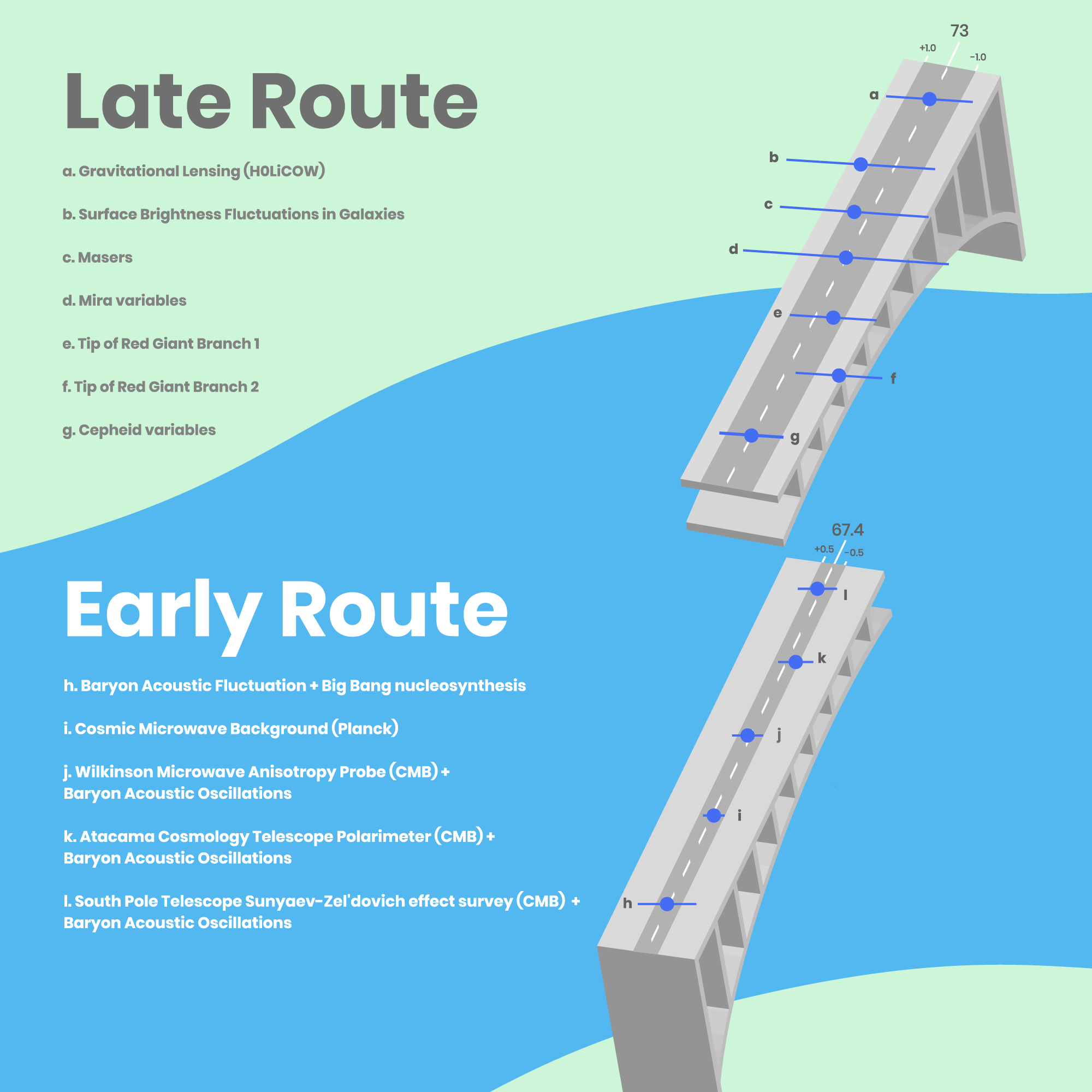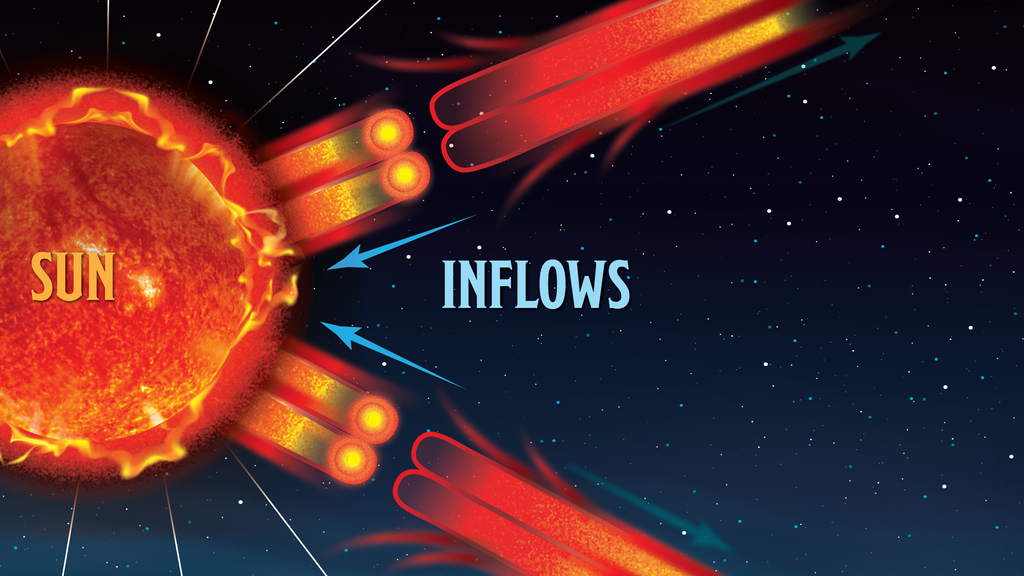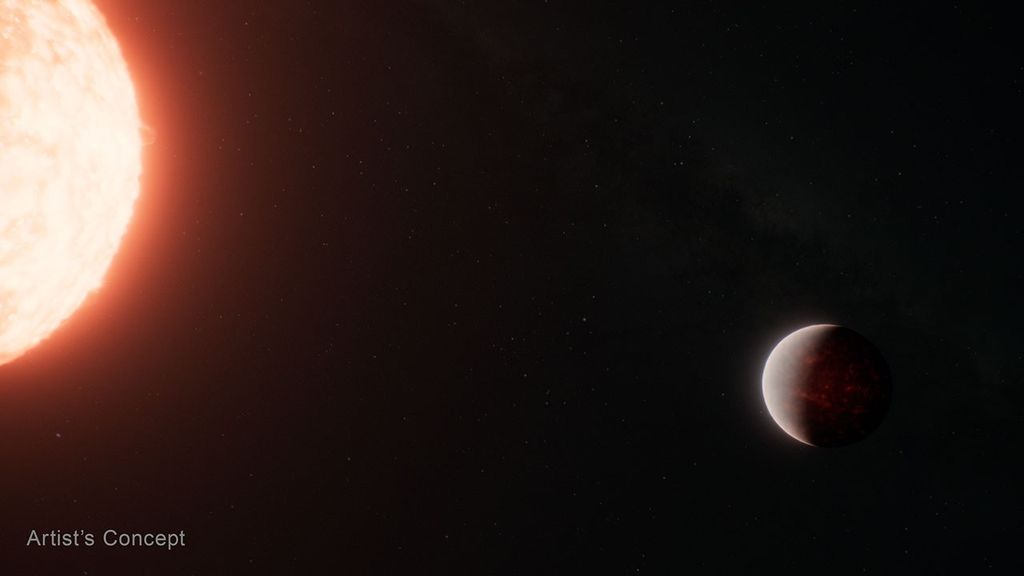1 min read
Infographic on Hubble Constant

The Wide Divide in the Expansion Rate Measurements
This graphic lists the variety of techniques astronomers have used to measure the expansion rate of the universe, known as the Hubble constant. Knowing the precise value for how fast the universe expands is important for determining the age, size, and fate of the cosmos.
One set of observations looked at the very early universe. Based on those measurements, astronomers calculated a Hubble constant value. A second set of observation strategies analyzed the universe's expansion in the local universe.
The challenge to cosmologists is that these two approaches don't arrive at the same value. It's just as perplexing as two opposite sections of a bridge under construction not lining up. Clearly something is wrong, but what? Astrophysicists may need to rethink their ideas about the physical underpinnings of the observable universe.
The top half of the illustration outlines the seven different methods used to measure the expansion in the local universe. The letters corresponding to each technique are plotted on the bridge on the right. The location of each dot on the bridge road represents the measured value of the Hubble constant, while the length of the associated bar shows the estimated amount of uncertainty in the measurements. The seven methods combined yield an average Hubble constant value of 73 kilometers per second per megaparsec.
This number is at odds with the combined value of the techniques astronomers used to calculate the universe's expansion rate from the early cosmos (shown in the bottom half of the graphic). However, these five techniques are generally more precise because they have lower estimated uncertainties, as shown in the plot on the bridge road. Their combined value for the Hubble constant is 67.4 kilometers per second per megaparsec.
- Release DateJanuary 8, 2020
- Science ReleaseCosmic Magnifying Glasses Yield Independent Measure of Universe’s Expansion
- Credit
Related Images & Videos

Mosaic of Gravitationally Lensed Quasars
Each of these Hubble Space Telescope snapshots reveals four distorted images of a background quasar surrounding the central core of a foreground massive galaxy. The multiple quasar images were produced by the gravity of the foreground galaxy, which is acting like a magnifying...
Share
Details
Claire Andreoli
NASA’s Goddard Space Flight Center
Greenbelt, Maryland
claire.andreoli@nasa.gov






























